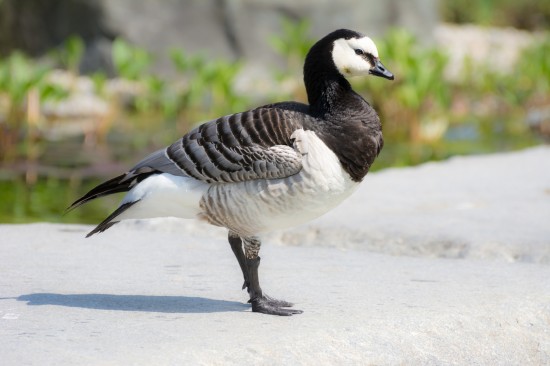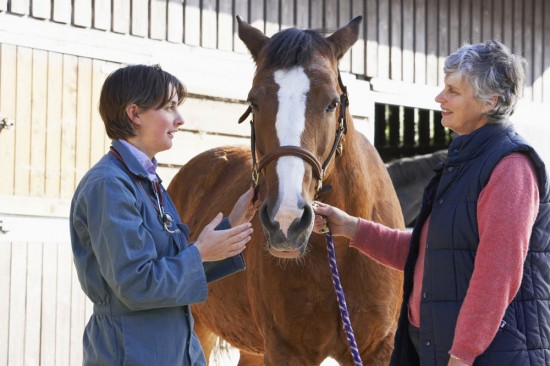
Demodexcanis is most commonly seen in young dogs. It is believed to have an hereditary basis and sire, dam and puppies should not be used for breeding after diagnosis is made. In my hands, treatment, although, expensive is usually successful and very few dogs are euthanased compared with 30 years ago. Young dogs can relapse later on in life especially if immunosuppressive drugs are used.
In older dogs, treatment is usually less successful and the dog may need to stay on maintenance therapy. Finding the underlying cause is always helpful as this makes the prognosis much more hopeful if treatment can be given. Underlying causes include: neoplasia, hypothyroidism, hyperadrenocorticism, serious systemic disease and allergy
Diagnosis
Made by clinical impression and the presence of large numbers of mites on skin scraping or hair plucks. The mites are usually found in the hair follicles so skin scraping should be deep and capillary ooze should be noted and some of this sample placed on your slide. Sometimes scrapings are negative but you are very suspicious of the mite. This can especially happen in feet and in certain thick skinned dogs such as mastiffs and Sharpeis. (I usually biopsy most of my sharpeis with skin disease as it helps me very quickly differentiate the different types of skin disease this dog commonly gets). Don’t feel bad if you miss it on a skin scraping.
Treatment
As previously mentioned, dogs with localised demodicosis do not usually need treatment. I recommend waiting to see if they progress before starting treatment.
In generalised treatment, it is very important to get the client’s co-operation from the start. This is a frustrating and expensive disease to treat but success levels have risen dramatically since I qualified. Most dogs will have a secondary infection and will need at least one month’s antibiotics at the appropriate dose. Good nutrition with a high quality fixed formulation diet high in essential fatty acids and treatment of fleas and worms are also important.
Amitraz has been the only licensed drug for many years. I am not a huge fan of this drug because of its potential to contaminate the environment and also because it can leave the patient quite unwell too. Amitraz is a formamidine and acts by inhibition of monoamine oxidase. It is also a prostaglandin synthesis inhibitor and alpha adrenergic agonist. If a dog has a deep pyoderma, I recommend 7-10 days of antibiotics to begin healing the skin before applying the amitraz usually at 500ppm, although 250ppm may be used in small dogs. If the dog has long hair it is sensible to clip the dog before instigating therapy. A benzoyl peroxide shampoo(Paxcutol, Virbac) should be used first to get rid of all the crusts and flush the follicles where the mites reside.
Commonly treatment will need to be performed weekly for at least 8-12 weeks to effect a cure. Monthly skin scrapes should be performed to count mite numbers as well as egg and larvae numbers. If no eggs are seen it suggests that the mites have stopped breeding. After I have seen no mites on scrape I continue for 4 weeks and then stop. I tell the owners to watch the dog very closely for the next year. If they do not relapse in the first 12 months they will probably have no further problems unless treated with immunosuppressive drugs such as steroids.
Promeris is a product made by Fort Dodge which contains amitraz in a spot on form to counteract ticks. Thay also have a recommendation for use in demodex. This product seems to reduce numbers rather than eradicate them.
Macrocyclic lactones
These drugs are produced as a by fermentation of various actinomycetes. This class of drugs includes ivermectin and selamectin. They work by potentiating the release and effects of GABA. GABA is a peripheral neurotransmitter in susceptible nematodes, arachnids and insects. They are also agonists of glutamate gated chloride channels. In mammals, GABA is limited to the CNS. These drugs do not cross the blood/brain barrier and are, therefore, safe at usual doseage levels. However, high doses of ivermectin can be toxic in dogs under 3 months or certain breeds particularly collies and collie crosses.
PLEASE DO NOT USE THESE DRUGS IN THESE BREEDS FATALITIES HAVE OCCURRED
However, in most dogs it is wonderfully tolerated and I have found it to be a wonderful drug in the treatment of juvenile onset demodicosis. I usually see referral cases were other treatments have failed and I feel ok to reach for the ivermectin. You need to be careful of the cascade before doing this and obviously request informed consent. Iddex can perform a test called the Ivermectin hypersensitivity test which looks for the MDR1 mutation. This is a useful test to do before starting the dog on ivermectin. The usual dose is 600 micrograms/kg or 1ml per 17 kg. This is given orally each day until no mites are seen and one further month has passed.
Milbemycin can be used at a dose rate of 1-2 mg/kg sid. It is better tolerated by ivermectin sensitive breeds. However, it is very expensive when used in this way. We do not have milbemycin on its own in the UK so it would need to be imported under licence from the VMD. Some dermatologists use cat milbemax tablets at 1-2mg/kg of the milbemycin and ignore the praziquantal dose. This is given orally and daily
Bayer’s product Advocate contains the milbemycinmoxidectin. It has a claim for demodicosis and was presented in Hong Kong at The World Veterinary Dermatology Congress in November 2008 by Ralph Mueller from Germany.
In the study, the advocate was applied every 2 weeks. 72 dogs were included in the study: 52 with juvenile onset, 20 with adult onset disease. 23 juvenile onset dogs went into remission 3 with adult onset. Mean time until remission was 12.5 weeks. He also showed that dogs with mild signs showed a better success rate than those with severe disease.
This products seems to be better at controlling rather than eradicating the mites. Dogs will often look better but are not microscopically cured.
In cases that do not cure, then maintenance treatment will probably be required.
Please check dosage and always get informed consent for un-licensed drugs.
Treating dogs with demodicosis can be frustrating and will often take several months. It is important to stick with treatment and measure success by using repeated skin scrapes. I hope this review of treatment in 2011 will be useful for the practising vet.
 British Birds - Geese
British Birds - G
British Birds - Geese
British Birds - G
 Urinary Incontinence And Oestrogen Levels In Bitches
Urinary Incontine
Urinary Incontinence And Oestrogen Levels In Bitches
Urinary Incontine
 Ten Good Supplemental Foods To Help Combat Problems In Dogs
Ten Good Suppleme
Ten Good Supplemental Foods To Help Combat Problems In Dogs
Ten Good Suppleme
 Getting A Horse Or Pony Vetted Prior To Purchase
Getting A Horse O
Getting A Horse Or Pony Vetted Prior To Purchase
Getting A Horse O
 Breeding From Your Pet Rabbit
Breeding From You
Breeding From Your Pet Rabbit
Breeding From You
Copyright © 2005-2016 Pet Information All Rights Reserved
Contact us: www162date@outlook.com